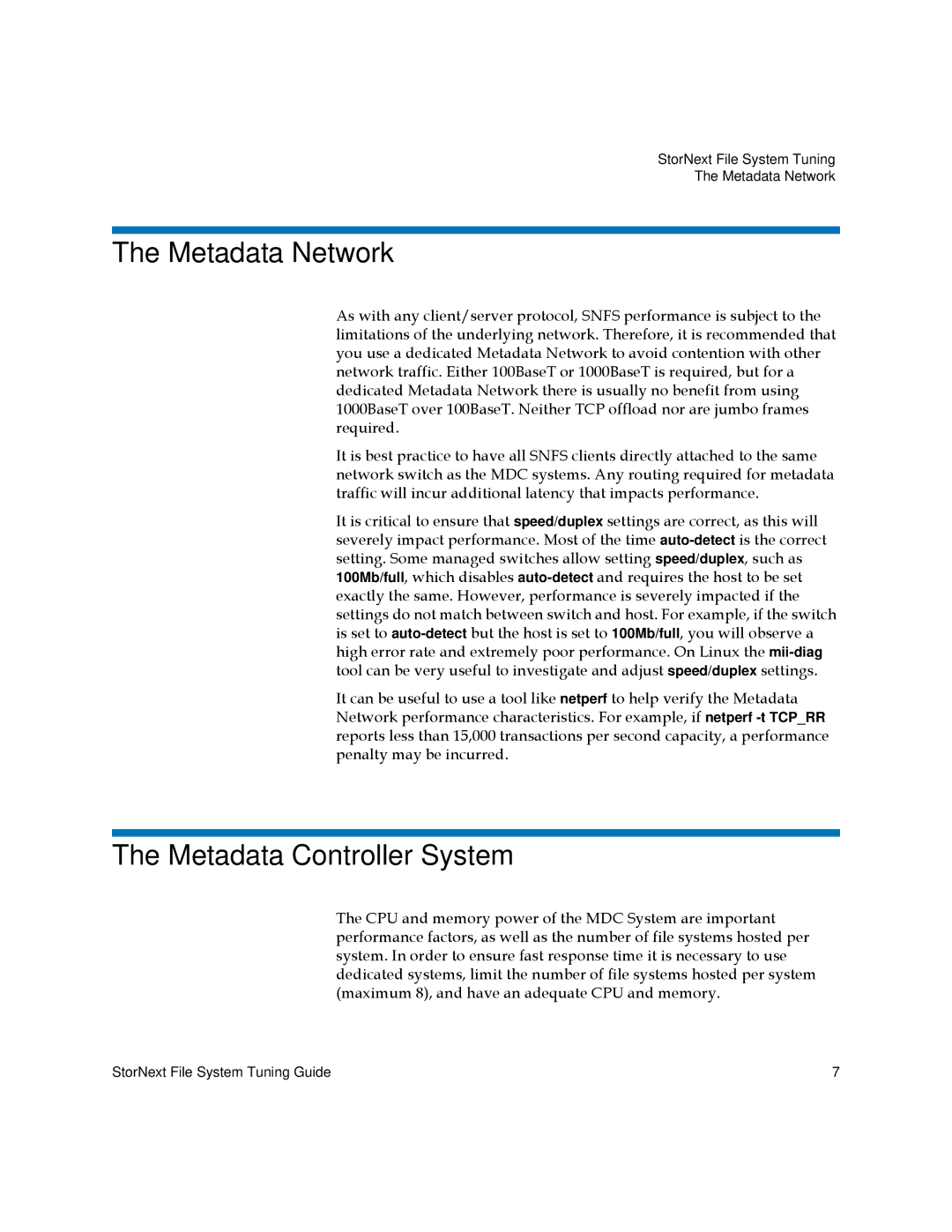
StorNext File System Tuning
The Metadata Network
The Metadata Network
As with any client/server protocol, SNFS performance is subject to the limitations of the underlying network. Therefore, it is recommended that you use a dedicated Metadata Network to avoid contention with other network traffic. Either 100BaseT or 1000BaseT is required, but for a dedicated Metadata Network there is usually no benefit from using 1000BaseT over 100BaseT. Neither TCP offload nor are jumbo frames required.
It is best practice to have all SNFS clients directly attached to the same network switch as the MDC systems. Any routing required for metadata traffic will incur additional latency that impacts performance.
It is critical to ensure that speed/duplex settings are correct, as this will severely impact performance. Most of the time
It can be useful to use a tool like netperf to help verify the Metadata Network performance characteristics. For example, if netperf
The Metadata Controller System
The CPU and memory power of the MDC System are important performance factors, as well as the number of file systems hosted per system. In order to ensure fast response time it is necessary to use dedicated systems, limit the number of file systems hosted per system (maximum 8), and have an adequate CPU and memory.
StorNext File System Tuning Guide | 7 |
